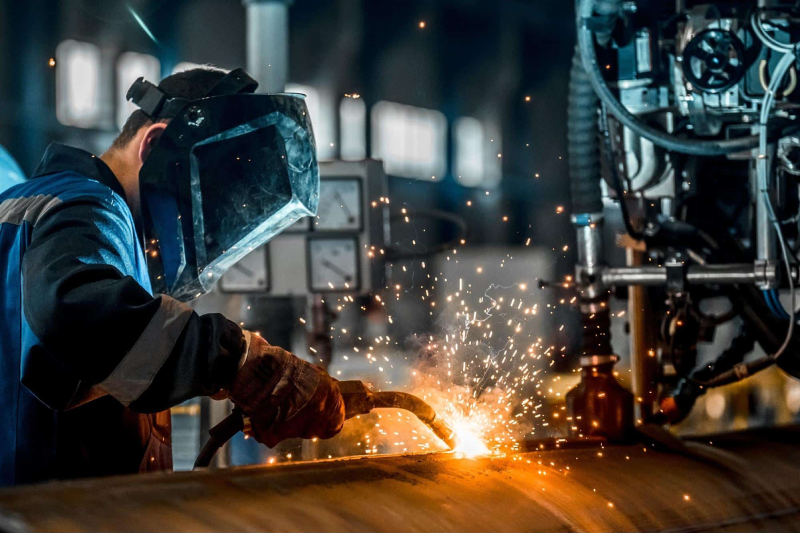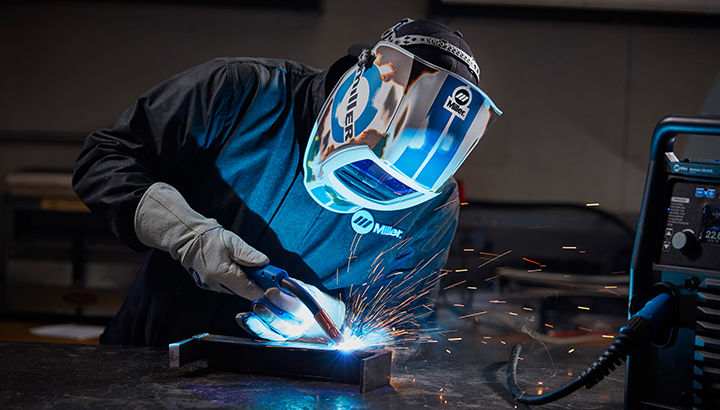Typical Welding Repair Work Issues and Just How to Address Them Efficiently
Welding repair work often experience an array of problems that can threaten the honesty of the end product. Usual problems consist of inadequate infiltration, porosity, and imbalance, to name a few. Each flaw presents special challenges that call for certain techniques for resolution. Recognizing these problems is necessary for welders intending to boost their outcomes and abilities. This discussion will certainly check out these typical welding repair work issues and efficient methods to resolve them.
Insufficient Infiltration
Insufficient penetration occurs when the weld steel stops working to completely fuse with the base material, resulting in weak joints and prospective structural failings. This problem typically originates from inadequate heat input, inaccurate electrode angle, or improper welding rate. Welders might run into poor penetration due to a miscalculation of the required parameters for a particular material thickness or type. In addition, contamination on the base material's surface can hinder efficient bonding, intensifying the trouble. To address poor penetration, welders ought to guarantee ideal settings on their tools and keep a clean work surface area. Regular examination of welds is recommended to determine any kind of deficiencies early, allowing for timely modifications and the avoidance of jeopardized architectural honesty in bonded assemblies.
Porosity
Porosity is an usual flaw in welded joints that shows up as tiny gas bubbles caught within the weld metal. This issue can compromise the honesty of the weld, leading to reduced strength and potential failing under tension. Montana Mobile Welding and Repair Belgrade Fabrication. Porosity usually emerges from contamination, dampness, or improper welding strategies, which allow gases to leave right into the liquified weld pool. To resolve porosity, welders must ensure proper surface area prep work, preserve a clean workplace, and utilize ideal welding parameters. Additionally, picking the ideal filler product and securing gas can alleviate gas entrapment. Normal assessment and screening of welds can assist recognize porosity early, assuring timely restorative activities are taken, consequently preserving the top quality and dependability of the welded structure
Misalignment
Misalignment in welding can develop from various elements, consisting of incorrect arrangement and thermal development. Comprehending the origin is necessary for effective resolution. Several improvement strategies are readily available to realign components and ensure architectural stability.
Root causes of Misalignment
Welding misalignment commonly stems from a range of underlying concerns that can jeopardize architectural integrity. One main cause is inappropriate fit-up of elements before welding, which can result in voids and irregular surface areas. Variants in thermal growth throughout the welding process can additionally cause distortion, especially if the materials being signed up with have different coefficients of growth. In addition, inadequate clamping and fixturing might fail to hold elements securely in position, bring about activity during welding. Inadequately conserved devices, consisting of welding makers and tools, might introduce variances in the weld bead, more contributing to imbalance. Operator error, stemming from inadequate training or experience, can also play a substantial function in creating misaligned welds.

Modification Techniques Readily Available
Resolving imbalance effectively needs a mix of restorative techniques customized to the particular issues available. One usual approach is the use of fixtures or jigs to hold parts in the right position during welding, making sure constant placement. Additionally, preheating the materials can help lower distortion and enhance fit-up. For considerable misalignment, mechanical realignment strategies, such as making use of hydraulic jacks or clamps, can be used to fix the placement prior to welding. Post-weld heat treatment may additionally be required to alleviate anxieties triggered by imbalance. Careful examination and change throughout the configuration stage can prevent misalignment concerns from ending up being considerable troubles, advertising a smoother welding process and improving general structural stability.
Distortion
Distortion is a common difficulty in welding that can emerge from numerous factors, consisting of unequal heating & cooling. Recognizing the root causes of distortion is essential for executing efficient avoidance strategies. Resolving this concern not just improves structural honesty but additionally improves the overall high quality of the weld.
Root causes of Distortion
When based on the extreme warmth of welding, materials typically undergo modifications that can cause distortion. This phenomenon mainly develops from thermal development and contraction throughout the welding process. As the weld area heats up, the material increases; upon air conditioning, it acquires, which can create inner stresses. In addition, unequal home heating across a work surface can worsen these stress and anxieties, leading to bending or bending. The sort of material additionally plays a considerable role; metals with varying thermal conductivity and coefficients of growth may respond differently, leading to uncertain distortions. Poor joint design and inadequate fixturing can contribute to misalignment during welding, increasing the likelihood of distortion. Comprehending these reasons is essential for effective welding fixing and avoidance strategies.
Prevention Techniques
Efficient prevention methods for distortion throughout welding concentrate on controlling warmth input and guaranteeing appropriate joint design. Keeping a consistent warmth input aids to minimize thermal development and contraction, which can bring about distortion. Using methods such as preheating the workpiece can likewise decrease the temperature gradient, advertising uniform home heating. Additionally, selecting proper joint layouts, such as T-joints or lap joints, can boost security and lower stress and anxiety focus. Applying correct fixturing to protect the work surfaces in place additionally help in maintaining alignment throughout the welding process. Finally, staggered welding series can distribute heat much more equally, avoiding local distortion. By applying these approaches, welders can substantially decrease the possibility of distortion and improve the overall high quality of their welds.
Breaking
Fracturing is an usual issue come across in welding fixings, typically resulting from numerous variables such as inappropriate cooling rates, product option, or poor joint prep work. The event of fractures can significantly endanger the honesty of the weld, leading to potential failures throughout procedure. To resolve this concern, welders must first examine the source, making certain that materials are compatible and properly selected for the particular application. In addition, regulating the air conditioning rate during the Going Here welding process is vital; rapid air conditioning can cause stress and bring about fracturing. Proper joint design and prep work also add to minimizing the danger. Executing these techniques can boost weld top quality and resilience, inevitably minimizing the likelihood of fracturing in finished weldments.
Insufficient Fusion
A substantial concern in welding fixings is incomplete combination, which takes place when the weld steel does not sufficiently bond with the base material or previous weld passes - Belgrade. This flaw can lead to weak points in the joint, possibly compromising the honesty of the welded framework. Factors contributing to insufficient combination include inadequate heat input, improper welding technique, and contamination of the surface areas being joined. To resolve this issue properly, welders should assure correct pre-weld cleaning and surface area prep work, as well as change their welding specifications to achieve ample infiltration and fusion. Regular inspection throughout the welding procedure can likewise aid identify insufficient combination early, enabling timely restorative measures to improve the overall quality of the weld
Overheating
While welding repair services can boost structural integrity, overheating presents a considerable challenge that can result in material degradation. Excessive warm throughout welding can modify the mechanical residential or commercial properties of metals, resulting in decreased stamina, raised brittleness, and warping. This phenomenon is specifically critical in high-stress applications where architectural dependability is paramount. Recognizing getting too hot can include aesthetic inspections for discoloration or distortion, in addition to keeping an eye on temperature throughout the welding process. To reduce the dangers connected with overheating, welders should employ suitable strategies, such as managing warm input, adjusting travel rate, and using ideal filler materials. In addition, implementing pre- and post-weld warmth therapies can help recover product buildings and improve the overall quality of the repair service, making sure lasting efficiency and security.
Often Asked Questions
What Are the Common Indicators of a Welding Flaw?

How Can I Examine My Welds for High quality?
To evaluate welds for top quality, one can make use of aesthetic evaluations, ultrasonic screening, and radiographic methods. Each go right here method assures architectural honesty, determines problems, and verifies adherence to specified requirements, eventually improving the dependability of the bonded joints.
What Safety Safety Measures Should I Take While Welding?
When welding, one must focus on security by using appropriate individual safety devices, making certain appropriate air flow, safeguarding combustible materials away, preserving a clean work area, and being conscious of surroundings to avoid mishaps and injuries.
Can I Fix a Weld Without Remodeling the Entire Joint?
Fixing a weld without redesigning the whole joint is feasible, depending on the damage (Montana Mobile Welding and Repair Belgrade Welding). Methods such as grinding, adding filler material, or utilizing a welding procedure can effectively resolve specific defects while maintaining the bordering framework
What Devices Are Necessary for Reliable Welding Fixes?
Vital tools for efficient welding fixings consist of a welding maker, cord brush, mill, safety gear, clamps, and filler products. Each anchor tool plays an essential function in making sure top quality and security throughout the repair procedure. Porosity typically emerges from contamination, wetness, or inappropriate welding methods, which enable gases to get away into the liquified weld swimming pool. Badly conserved equipment, consisting of welding makers and tools, may introduce disparities in the weld grain, additional adding to misalignment. When subjected to the extreme heat of welding, products typically undergo adjustments that can lead to distortion. Fracturing is a typical concern come across in welding fixings, typically resulting from various aspects such as incorrect cooling rates, material option, or poor joint prep work. A considerable concern in welding repair work is incomplete combination, which occurs when the weld metal does not effectively bond with the base material or previous weld passes.